
Tensions are high in consciousness research, with over 100 researchers criticizing the Integrated Information Theory (IIT) as pseudoscientific. While IIT suggests that consciousness is more widespread than traditionally believed, critics argue that its broad claims lack comprehensive empirical support. Additionally, while IIT uniquely combines scientific and philosophical perspectives, some researchers believe this blending might undermine the field’s scientific rigor.
Over 100 consciousness researchers contest the integrated information theory’s validity, sparking debate about the intersection of science and philosophy in understanding consciousness.
Civil war has broken out in the field of consciousness research. More than 100 consciousness researchers have signed a letter accusing one of the most popular scientific theories of consciousness – the integrated information theory – of being pseudoscience.
Immediately, several other figures in the field responded by critiquing the letter as poorly reasoned and disproportionate.
Both sides are motivated by a concern for the long-term health and respectability of consciousness science. One side (including the letter signatories) is worrying that the association of consciousness science with what they perceive to be a pseudoscientific theory will undermine the credibility of the field.
The other side is pressing that what they perceive as unsupported charges of pseudoscience will ultimately result in the whole science of consciousness being perceived as pseudoscience.
Integrated Information Theory Unpacked
Integrated information theory – often referred to as IIT – is a very ambitious theory of consciousness proposed by neuroscientist Giulio Tononi. It ultimately aims to give mathematically precise conditions for when any system – a brain or some other lump or matter – is or is not conscious.
The theory revolves around a mathematical measure of integration of information, or interconnections, labeled with the Greek letter ϕ. The basic idea is that a system becomes conscious at the precise moment when there is more ϕ in the system as a whole than in any of its parts.
IIT implies that many more things are conscious than we ordinarily suppose. This means it gets close to a kind of “panpsychism” – the view that consciousness pervades the physical universe. Having said that, there are big differences between IIT and the new wave of Bertrand Russell-inspired panpsychism which has recently been making waves in academic philosophy, and which has been the focus of much of my research.
IIT even implies, as pointed out by the computer scientist Scott Aaronson, that an inactive grid of connected logic gates would be conscious.
The signatories of the letter worry that, while certain aspects of IIT may have been tested, the theory as a whole has not. Therefore, they argue, there is little experimental support for these bold and counter-intuitive implications. Opponents of the letter say that this is true of all current theories of consciousness, and reflects challenges with current neuroimaging techniques.
Adversarial Collaboration
All of this follows the announcement over the summer of the first results of an “adversarial collaboration” between IIT and another popular theory of consciousness, known as the global workspace theory.
According to this theory, information in the brain becomes conscious when it is in a “global workspace”, which means it is available to be used by many and varied systems throughout the brain – perceptual areas, long-term memory and motor control – for a wide variety of tasks. In contrast, if certain information is only available to a single system in the brain to perform a highly specific task, such as to regulate breathing, then that information is not conscious.
The idea of an adversarial collaboration is that the proponents of each of the rival theories design experiments together, and agree in advance on which results would favour each theory.
The hope is that agreeing in advance about what the results would mean will prevent theorists from interpreting whatever results come up as fitting with their preferred theory. This first round of experimental results turned out to be mixed. Some confirmed certain parts of IIT, and some backed up particular aspects of global workspace theory. On balance, there was arguably a slight advantage to IIT.
The announcement of these ambiguous results was accompanied by the neuroscientist Christof Koch – a prominent proponent of IIT – publicly conceding defeat on a bet he made 25 years ago with philosopher David Chalmers, that the science of consciousness would be all wrapped up by now.
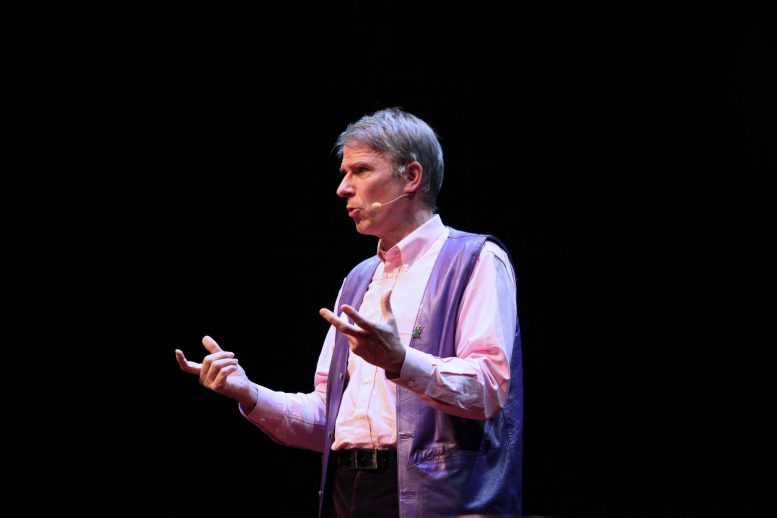
Christof Koch giving a TED talk. CC BY-NC-ND
Philosophical Underpinnings of IIT
One factor that may be playing a big role, although it has not been explicitly mentioned in any of these online skirmishes, is that IIT does not merely justify itself through scientific experimentation. It also involves philosophical reflection.
IIT begins with five “axioms,” which its proponents claim each of us can know through attention to our own conscious experience. These include that conscious experience is unified – that we don’t experience, say, colors and shapes separately but as aspects of a single, unbroken experience.
The theory then translates these axioms into five corresponding “postulates” – properties that it claims are required for a physical system to embody consciousness. For example, IIT explains the unity of our conscious experience in terms of the integration of the physical system.
Opponents of IIT may in part be motivated by a desire to sharply distinguish the science from the philosophy of consciousness, thus ensuring the former is perceived – in particular by funders – as a serious scientific enterprise.
Consciousness: Beyond the Realm of Pure Science
The problem is that consciousness is not merely a scientific issue. The task of science is to explain publicly observable phenomena. But consciousness is not a publicly observable phenomenon: you can’t look inside someone’s brain and see their feelings and experiences. Of course, science theorizes about unobservable phenomena, such as fundamental particles, but it only does this to explain what can be observed. In the unique case of consciousness, the phenomenon we are trying to explain is not publicly observable.
Instead, consciousness is known about privately, through the immediate awareness each of us has of our own feelings and experience. The downside of this is that it’s very hard to experimentally demonstrate which theory of consciousness is correct. The upside is that, in contrast to other scientific phenomena, we have direct access to the phenomenon, and our direct access may provide insights into its nature.
Crucially, to accept that our knowledge of consciousness is not limited to what we can glean from experiments is to accept that we need both science and philosophy to deal with consciousness. In my new book Why? The Purpose of the Universe, I explore how such a partnership could be achieved.
IIT is not perfect, either in its scientific or its philosophical aspects. But it is pioneering in accepting the need for science and philosophy to work hand in glove to crack the mystery of consciousness.
The problem is that consciousness is not merely a scientific issue. The task of science is to explain publicly observable phenomena. But consciousness is not a publicly observable phenomenon: you can’t look inside someone’s brain and see their feelings and experiences. Of course, science theorizes about unobservable phenomena, such as fundamental particles, but it only does this to explain what can be observed. In the unique case of consciousness, the phenomenon we are trying to explain is not publicly observable.
Instead, consciousness is known about privately, through the immediate awareness each of us has of our own feelings and experience. The downside of this is that it’s very hard to experimentally demonstrate which theory of consciousness is correct. The upside is that, in contrast to other scientific phenomena, we have direct access to the phenomenon, and our direct access may provide insights into its nature.
Crucially, to accept that our knowledge of consciousness is not limited to what we can glean from experiments is to accept that we need both science and philosophy to deal with consciousness. In my new book Why? The Purpose of the Universe, I explore how such a partnership could be achieved.
IIT is not perfect, either in its scientific or its philosophical aspects. But it is pioneering in accepting the need for science and philosophy to work hand in glove to crack the mystery of consciousness.
Written by Philip Goff, Associate Professor of Philosophy, Durham University.
Adapted from an article originally published in The Conversation.![]()




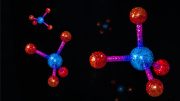
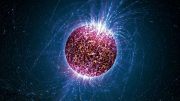
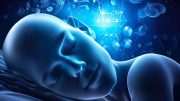
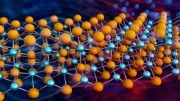

Science employs only replicable (i.e. “public”) observations of public phenomena. It often infers the existence of entities that cannot be replicably perceived by humans without the use of instruments and that is how “consciousness” should be treated – as a theoretical entity that may be necessary to account for public observations. Private “observations” are not scientific data. It does not matter that many people will testify to having them: science is not founded on testimony about private experiences but on repeatable observations and experiments, which ideally can be carried out by instruments such and space telescopes and data pipelines. If an instrumental detection of consciousness becomes possible which can reliably replace private testimony then consciousness could be inferred by use of the instrument and would be a detectable theoretical entity, like an elementary particle in a physics. But the use of testimony to establish consciousness as a phenomenon is illegitimate in science.
To me this seems far more pseudoscience-y, than the theory that states consciousness might be the amalgamation of several unique personalities within our brains. (and there is some actual scientific evidence that supports that a little)
It’s becoming clear that with all the brain and consciousness theories out there, the proof will be in the pudding. By this I mean, can any particular theory be used to create a human adult level conscious machine. My bet is on the late Gerald Edelman’s Extended Theory of Neuronal Group Selection. The lead group in robotics based on this theory is the Neurorobotics Lab at UC at Irvine. Dr. Edelman distinguished between primary consciousness, which came first in evolution, and that humans share with other conscious animals, and higher order consciousness, which came to only humans with the acquisition of language. A machine with only primary consciousness will probably have to come first.
What I find special about the TNGS is the Darwin series of automata created at the Neurosciences Institute by Dr. Edelman and his colleagues in the 1990’s and 2000’s. These machines perform in the real world, not in a restricted simulated world, and display convincing physical behavior indicative of higher psychological functions necessary for consciousness, such as perceptual categorization, memory, and learning. They are based on realistic models of the parts of the biological brain that the theory claims subserve these functions. The extended TNGS allows for the emergence of consciousness based only on further evolutionary development of the brain areas responsible for these functions, in a parsimonious way. No other research I’ve encountered is anywhere near as convincing.
I post because on almost every video and article about the brain and consciousness that I encounter, the attitude seems to be that we still know next to nothing about how the brain and consciousness work; that there’s lots of data but no unifying theory. I believe the extended TNGS is that theory. My motivation is to keep that theory in front of the public. And obviously, I consider it the route to a truly conscious machine, primary and higher-order.
My advice to people who want to create a conscious machine is to seriously ground themselves in the extended TNGS and the Darwin automata first, and proceed from there, by applying to Jeff Krichmar’s lab at UC Irvine, possibly. Dr. Edelman’s roadmap to a conscious machine is at https://arxiv.org/abs/2105.10461
“Crucially, to accept that our knowledge of consciousness is not limited to what we can glean from experiments is to accept that we need both science and philosophy to deal with consciousness. In my new book Why? The Purpose of the Universe, I explore how such a partnership could be achieved.”
And I too have some insight into consciousness. For example, I am idelibly aware that I’m not buying this guy’s book no matter how seductively or sereptitiously he plugs it.
Talk about academics and cat fights… mrrrowww.